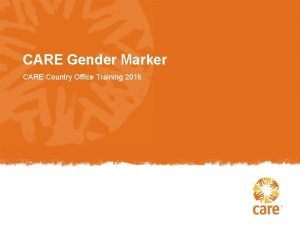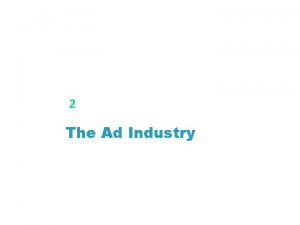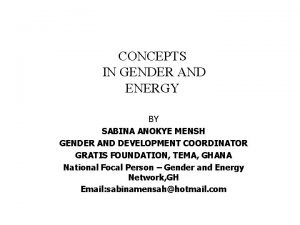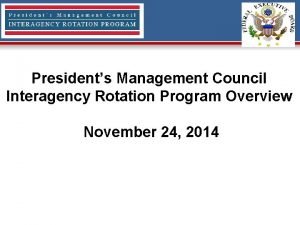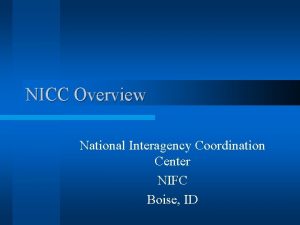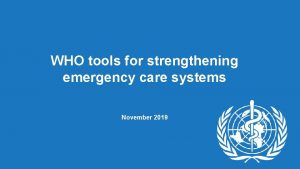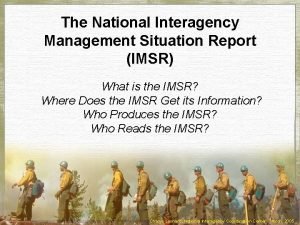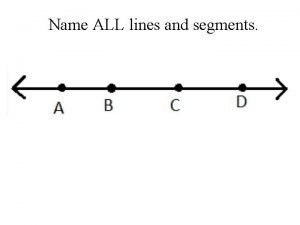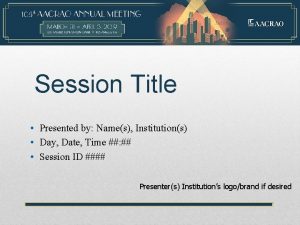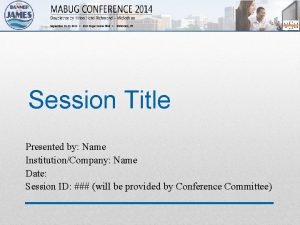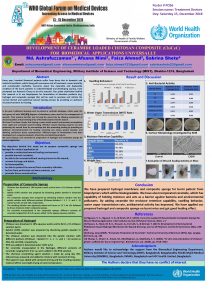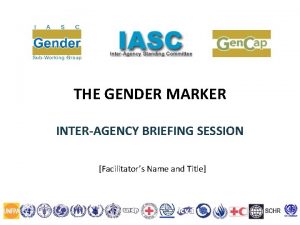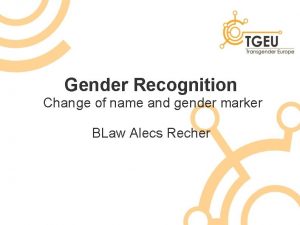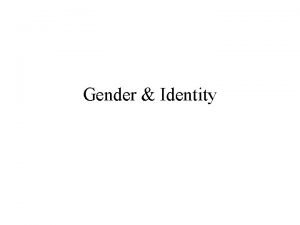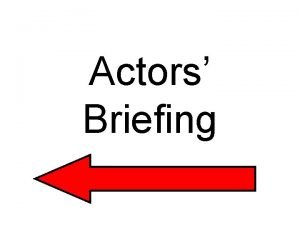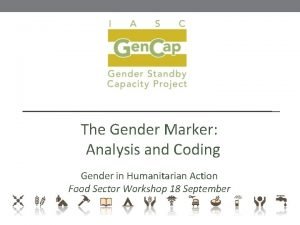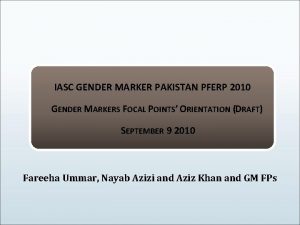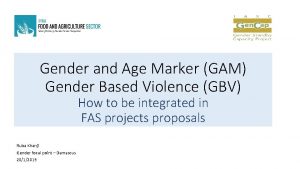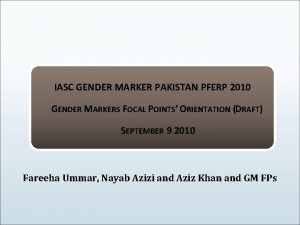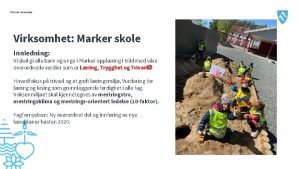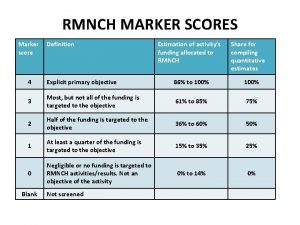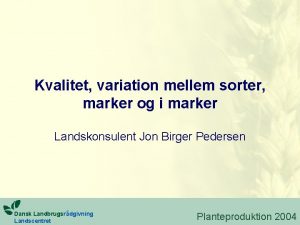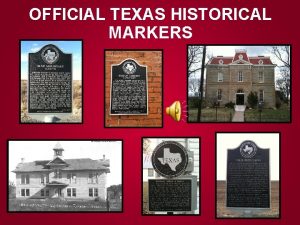THE GENDER MARKER INTERAGENCY BRIEFING SESSION Facilitators Name
![THE GENDER MARKER INTER-AGENCY BRIEFING SESSION [Facilitator’s Name and Title] THE GENDER MARKER INTER-AGENCY BRIEFING SESSION [Facilitator’s Name and Title]](https://slidetodoc.com/presentation_image_h/cf7d936a2b994c091e41d5328b17fd05/image-1.jpg)
THE GENDER MARKER INTER-AGENCY BRIEFING SESSION [Facilitator’s Name and Title]

SESSION OVERVIEW 1. 2. 3. 4. 5. 6. 7. 8. History of the IASC Gender Marker (GM) Purpose of the GM GM Coding Performance of clusters in the 2011 roll-out Examples of coding Successes and challenges Monitoring GM use Next steps for 2012

HISTORY OF THE GENDER MARKER

PURPOSE OF THE GENDER MARKER A SIMPLE and PRACTICAL tool; § § To measure/track inclusion of gender and GBV; To enable/to build capacity of humanitarian teams to be able to design their projects so women, girls, boys and men benefit. A MORE ACCURATE NAME FOR THE GM MIGHT BE THE “WHO BENEFITS MARKER”

GENDER MARKER CODING Gender Mainstreaming: the different needs of women, girls, boys and men are analyzed. This analysis is reflected in project activities and outcomes Targeted Actions: assisting women, girls, boys or men who suffer discrimination and building genderspecific services

GENDER MARKER CODING GENDER CODE 0 DESCRIPTION Gender is not reflected anywhere in the project sheet May not contribute to gender equality 1 The project includes gender equality in the needs assessment, in an activity or in an outcome Contributes in a limited way to gender equality

GENDER MARKER CODING GENDER CODE DESCRIPTION The project’s needs assessment includes a 2 a gender analysis and the gender analysis is GENDER reflected in the project’s activities and MAINSTREAMING outcomes. Contributes significantly to gender equality 2 b TARGETED ACTION The project is targeted based on gender analysis The principal purpose is to advance gender equality.

APPLYING A GENDER CODE: WHO AND HOW? § § § Self-assessment tool for clusters Gender Marker Focal Point(s) Importance of including gender and GBV in selection and prioritization criteria NEEDS ACTIVITIES OUTCOMES

CLUSTERS’ PERFORMANCE IN CAP 2011 (CHANGE IN GM CODES FROM CAP 2010 TO CAP 2011 IN SIX COUNTRIES) % OF PROJECTS CLUSTER CODE 0 CODE 1 CODE 2 A CODE 2 B 2010 2011 54% 18% 30% 39% 11% 36% 6% 7% Coord & Support 60% 39% 26% 24% 5% 37% 10% 0% E. Recovery 54% 10% 24% 21% 12% 64% 10% 5% Education 35% 3% 27% 28% 38% 65% 0% 5% Food Sec. /Aid 29% 28% 54% 28% 14% 4% 0% Health 38% 12% 31% 28% 13% 51% 18% 10% Multi-Sector - Refs 44% 0% 52% 41% 4% 53% 0% 6% Nutrition 45% 29% 32% 14% 35% 2% 3% Protection 44% 8% 19% 25% 57% 13% 16% Shelter/NFI/CCCM 40% 7% 50% 41% 10% 37% 0% 15% WASH 57% 12% 30% 50% 12% 34% 1% 3% Totals 45% 15% 32% 14% 47% 6% 6% § G Agriculture

CLUSTER AND AGENCY INSIGHTS FROM THE 2011 ROLL-OUT § Take points relevant to your Agency(ies)/Clusters from notes provided in Facilitator’s Notes

EXAMPLES OF CODING § Take projects and points relevant to your Agency(ies)/Clusters from notes provided in Facilitator’s Notes; prepare relevant project sheets as per examples included in presentation materials.

THE SUCCESSES § § § Strong leadership and gender and GM champions Establishing minimum commitments Use of Tip-Sheets and other practical tools From the abstract to the practical Positive and constructive engagement Donor engagement

THE CHALLENGES § § § Monitoring - good articulation Vs. good programming? Collective action SADD Improving coding consistency and clearing up coding confusion (esp. RH, nutrition and GBV) Continued and increased donor engagement

AGENCY(IES)/CLUSTER-SPECIFIC CHALLENGES § Refer to Facilitator’s Notes – present those challenges that are relevant to the Agency(ies)/Clusters present

NEXT STEPS FOR 2012 MAINTAINING THE MOMENTUM § § § Ongoing in-country facilitation by Gen. Cap Advisors Tip Sheets revised and uploaded onto GM page (with translations into French and Arabic to come) Continued engagement of donors; donor strategy to be developed NGO strategy to be developed Monitoring strategy to be developed Continued lobbying by Gender SWG at all global, regional and country levels
- Slides: 15
